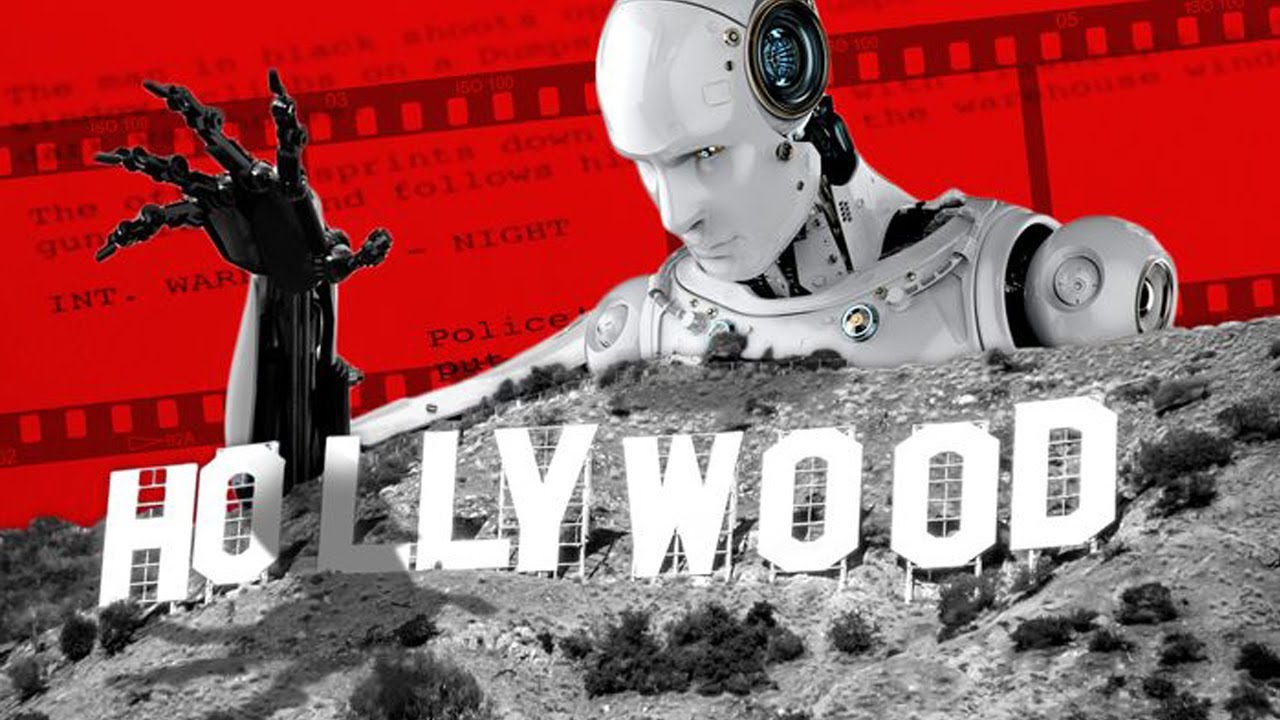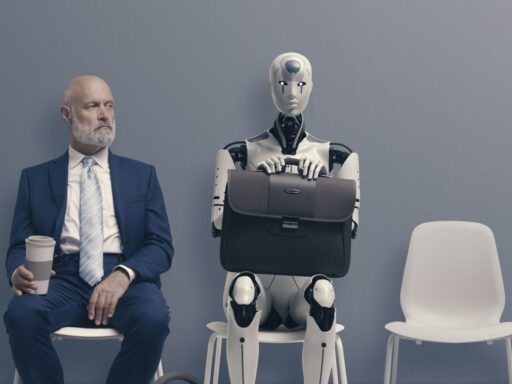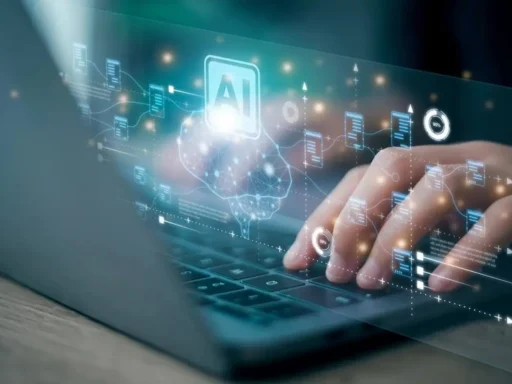Ever wondered if a computer could pick your favorite actor for the next blockbuster? Or maybe you’re curious about why those VFX monsters look so eerily lifelike now compared to just a few years ago? You’re not alone—movie buffs and industry insiders alike are buzzing about how Hollywood AI use is rewriting all the rules for what hits the screen (and what gets left on the cutting room floor). With stories swirling about scripts that get a robot’s greenlight before humans weigh in, and digital actors who might never set foot on set, it’s no wonder some folks feel both excited and more than a little uneasy.
Let’s face it—artificial intelligence isn’t just hype anymore; it’s reshaping everything from quirky indie flicks to billion-dollar blockbusters. From giving producers new ways to analyze scripts and cast talent smarter, to supercharging those jaw-dropping visual effects sequences we all crave, AI has become Hollywood’s latest secret weapon. But how did we get here—and where are things heading next? Let’s break down exactly how this tech wave crashed into Tinseltown and peek behind the curtain at what makes modern moviemaking tick.
The Evolution Of Ai In Hollywood
When most people think back to “technology” in old-school Hollywood, they picture bulky cameras or wild stunts—not lines of code running quietly in the background. But honestly, Tinseltown has always had a love affair with innovation—it just started out looking very different than today’s digital revolution.
Way back when studios first embraced sound over silent films or color instead of black-and-white reels, each step forward came with its own mix of excitement (and panic). Fast-forward a few decades: enter computer-generated imagery (CGI) as movies like “Jurassic Park” made dinosaurs run alongside real actors—a total game-changer.
Jump ahead again to early experiments with artificial intelligence tools: Here’s where things got really interesting! Instead of relying only on gut instinct or focus groups packed with popcorn fans, filmmakers started feeding whole scripts into smart software like ScriptBook or Pilot AI. Suddenly these systems were analyzing plot twists for audience appeal—or even flagging which storylines might flop at the box office.
By today’s standards though? Those first baby steps seem quaint. Now you’ll find major studios using neural networks not just during pre-production but throughout every stage—casting virtual actors via Talent AI or using platforms that help pinpoint which performer will best resonate with global audiences based on their online persona.
And it doesn’t stop there:
- Netflix leans heavily on recommendation algorithms that save them upwards of $1 billion per year by keeping viewers hooked.
- Visual effects teams at places like DNEG slash hours off projects using machine learning-powered rotoscoping tools.
- Even classic editing tasks—from rough cuts to dubbing—get turbocharged thanks to smarter-than-ever automation.
So yeah…what started as simple data crunching is now an essential part of moviemaking magic.
Key Ai Technologies In Film Production
| AI Technology | Main Application Area | Real-World Example | Benefit Highlighted |
| Machine Learning Algorithms for Visual Effects (VFX) | Smoothing out complex shots; automating time-consuming tasks like rotoscoping or rendering crowds & explosions. | DNEG reportedly cut rotoscoping times by up to 40%. Nvidia claims up to 10x faster rendering speeds using advanced ML models. | Saves countless hours; frees artists for creative work; enables hyperrealism. |
| Neural Networks for Animation | Mimicking realistic movement and facial expressions; animating digital creatures or characters without manual tweaking. | “The Lion King” (2019): Used neural nets extensively for lifelike animal motion across entire scenes. | Lifelike animation raises realism bar; reduces repetitive labor. |
| Natural Language Processing (NLP) for Script Analysis | Categorizing genre/emotion/arc structure; predicting commercial success before filming starts. | Pilot AI highlights plot holes and suggests fixes during development cycles; studios like Warner Bros rely on these analyses for greenlighting decisions. | Makes pre-production more data-driven; identifies high-potential projects earlier. |
| Computer Vision Applications | Casting (analyzing faces/digital personas); automating background replacements; deepfake technology for dubbing/special FX; | Casting Data helps match diverse talent quickly by parsing thousands of profiles instantly; Flawless AI lets actors’ lips sync perfectly in multiple languages. | Dramatic speed boost in casting & post-production workflow; allows truly global releases without awkward lip-sync errors. |
If you’ve watched “The Mandalorian,” you’ve seen real-time rendering powered by AI making virtual sets indistinguishable from reality—a glimpse at what tomorrow holds for movie lovers everywhere.
But while all this technology brings fresh opportunity—and sometimes controversy—it also prompts big questions: Can algorithms be fairer than humans when choosing casts? Will creativity survive when robots have such loud voices backstage?
If you want deeper insights into real-world impacts and future trends shaping this landscape, check out our comprehensive report [AI in Hollywood: Current State and Future Trends](#) covering even more angles on these transformative technologies.
Stay tuned—the next era of entertainment is being written right now.
Impact on Creative Processes
Ever wondered how Hollywood AI use is actually shaking up the creative side of filmmaking? If you picture a room filled with writers, directors, and artists nervously eyeing a blinking server rack in the corner, you’re not far off. But beneath the surface-level anxiety lies a fascinating shift in how stories get told, edited, and shared.
AI has quickly become the unsung assistant behind blockbuster hits and indie surprises alike. Take script analysis tools like ScriptBook or Pilot AI—they’re helping studios sift through mountains of screenplays faster than any human reader could hope for. Instead of wading through hundreds of scripts manually, execs can now get predictions about commercial appeal or spot plot holes at lightning speed. Imagine an algorithm whispering, “Maybe don’t kill off your hero on page 3.”
Casting’s gone high-tech too. Platforms such as Casting Data crunch everything from social media buzz to past box office performance to match actors with roles that fit—not just physically but also emotionally and culturally. In fact, some studios boast slashing casting costs by nearly a third while doubling their speed thanks to these new digital tools.
The magic doesn’t stop there. Visual effects and virtual production are being turbocharged by Hollywood AI use: think automated rotoscoping (a real pain point for VFX artists), superfast rendering via Nvidia’s smart tech, or even real-time set extension as seen on “The Mandalorian.” Studios no longer need endless on-location shoots; instead they generate hyperreal backgrounds or crowds with algorithms humming in the background.
- Pre-production: Automated script breakdowns mean less busywork for creative teams.
- Post-production: Editors rely on AI for instant scene detection and rough cut assembly—freeing them up for more nuanced storytelling decisions.
- Content democratization: Small creators get access to studio-grade tools (think Amper Music for scoring or Flawless AI for dubbing) once reserved only for deep-pocketed players.
- Efficiency gains: Netflix claims its recommendation engine alone saves $1 billion annually in customer retention—proving that time saved is money made.
So yes, Hollywood AI use isn’t just shaving dollars off budgets—it’s reshaping workflows so creatives can focus on what they do best: telling unforgettable stories.
Challenges and Concerns
Of course, every silver lining comes with its own storm clouds—and when it comes to Hollywood AI use, those clouds can be pretty dramatic. For every filmmaker thrilled about automated editing tools, there’s an editor wondering if their job is next on the chopping block.
Let’s start with quality control. While algorithms might catch continuity errors or suggest edits based on data patterns, they aren’t immune to mistakes—or bad taste! Remember that one time Netflix recommended a children’s cartoon right after a gritty true-crime docuseries? Now imagine an auto-generated trailer missing the entire emotional beat of your film because it didn’t “score well” in audience testing data.
Job displacement fears are real—especially among editors, VFX artists, composers, and even actors now facing competition from digital doppelgangers. The rise of “virtual actors,” powered by increasingly convincing deepfake technology or voice replication software like Flawless AI, stirs up worries about livelihoods vanishing overnight.
Then there’s the heated debate over creative authenticity. Is a screenplay still art if parts were generated by an algorithm trained on thousands of existing films? Can music composed by Amper ever pack the same emotional punch as John Williams conducting live? Critics argue that relying too much on pattern recognition risks churning out formulaic content instead of bold new ideas—the cinematic equivalent of eating fast food every night.
Main challenges come down to four big issues:
- Quality Control Considerations: Algorithms can miss nuance that makes art truly special.
- Job Displacement Fears: Widespread automation could shrink opportunities for skilled professionals across writing, editing, VFX design—even acting!
- Creative Authenticity Debates: Where does inspiration end and imitation begin when machines generate storylines or performances?
- Technical Limitations: Not all studios have budgets (or infrastructure) needed to leverage cutting-edge AI—and early-stage tech sometimes delivers wonky results.
If you’ve ever tried using autocorrect only to send someone a message that made zero sense… you’ll understand why filmmakers approach full automation with caution!
The future? It’s complicated—and kind of exhilarating. As Hollywood continues experimenting with smarter workflows powered by artificial intelligence—from blockbuster franchises down to scrappy YouTube creators—we’ll see new battles between efficiency and artistry play out both onscreen and behind-the-scenes.
The bottom line: as cool as Hollywood AI use gets (and it will keep getting cooler), balancing its potential against very real human concerns will define who leads—and who lags—in entertainment’s next act.
Future Implications for Hollywood AI Use
People keep asking: Is AI going to write the next Oscar-winning script? Are we headed for a future where virtual actors outshine the real ones? These aren’t just fun barbershop debates—they’re worries and hopes shared by studio execs, VFX pros, and up-and-coming screenwriters who see artificial intelligence moving in like an overnight sensation. The reality is, Hollywood AI use isn’t a sci-fi fantasy anymore; it’s the now—and it’s got its sights set on what comes next.
Let’s talk about emerging technologies. We’re seeing tools that analyze scripts with nearly 84% accuracy (shout out to ScriptBook), spot plot holes before a movie even rolls camera (hello, Pilot AI), and scan thousands of digital faces to match actors with roles—all in record time. That means studios can save millions by avoiding flops before they’re greenlit.
But here’s the kicker: AI doesn’t just pick scripts or cast better; it’s reimagining production itself. VFX work that used to take weeks can drop to days thanks to Nvidia-powered rendering or DeepMotion translating actor gestures into digital magic—think “The Mandalorian” and its jaw-dropping sets built inside LED walls powered by machine learning. Post-production? Automated scene detection, lifelike dubbing across languages (Flawless AI nails those awkward lip-sync moments), and Netflix-level recommendations keeping viewers glued longer.
- New creative possibilities: Imagine movies with personalized soundtracks crafted by Amper Music, trailers cut automatically for each viewer’s taste, or even entire films generated with dynamic scenes tailored to audience feedback.
Does all this mean robots will replace writers or deepfakes will flood your feeds? Not quite. What’s clear is that the speed and scope of transformation will force every Hollywood player—from indie filmmakers struggling with tight budgets to global studios chasing bigger blockbusters—to rethink what creativity looks like when machines are part of the team.
Industry Adaptation and Best Practices for Hollywood AI Use
Change makes people uneasy—even seasoned industry vets—and I get why. If you’ve been cutting film reels by hand or betting your career on gut instinct casting calls, news about bots writing scripts might feel threatening at best. But adaptation is less about fear than about getting practical: leveling up skills, setting some house rules, and figuring out how humans and algorithms can actually work together without losing their spark.
Training and skill development? It starts by making sure everyone—from editors learning automated tools to script analysts decoding algorithmic feedback—gets hands-on experience instead of treating AI as some black box oracle. Workshops from tech vendors help, but so does old-fashioned mentorship between veterans who know story structure cold and new hires fluent in Python.
Integration strategies: Don’t toss legacy workflows overnight! Smart studios run pilot projects—using platforms like Casting Data alongside traditional audition rounds—or blend human editorial oversight with algorithm-generated rough cuts so quality never slips through the cracks.
Ethical considerations are huge. Bias creeps into every model trained on yesterday’s data; if unchecked, you risk reinforcing old stereotypes rather than breaking them down. Studios should establish review boards—actual people checking outcomes for fairness—not just trust whatever spit out of a dashboard because it had more decimal places.
Regulatory compliance is coming fast. Copyright issues around AI-generated music or dialogue aren’t hypothetical—they’ll end up in court soon enough if boundaries stay fuzzy. Make sure legal teams stay close as new guidelines emerge; think DMCA updates meets Turing Test audits.
- Treat training as ongoing—not one-off seminars.
- Pilot small integrations first before scaling studio-wide.
- Create cross-disciplinary teams (coders + creatives).
- Aim for transparency in decision-making (“Why did this script get flagged?” shouldn’t be a mystery).
- Establish ethics panels early—not after PR nightmares blow up.
- Sweat copyright details; register everything you can prove ownership over—including code output!
Hollywood has always thrived on change—from silent pictures to CGI spectacles—and those leading the charge today won’t be the ones who automate away artistry but who make tech serve stories worth telling. My advice? Dive into these new waters headfirst—but don’t forget your life vest: solid skills, ethical frameworks, real collaboration between mind and machine.







